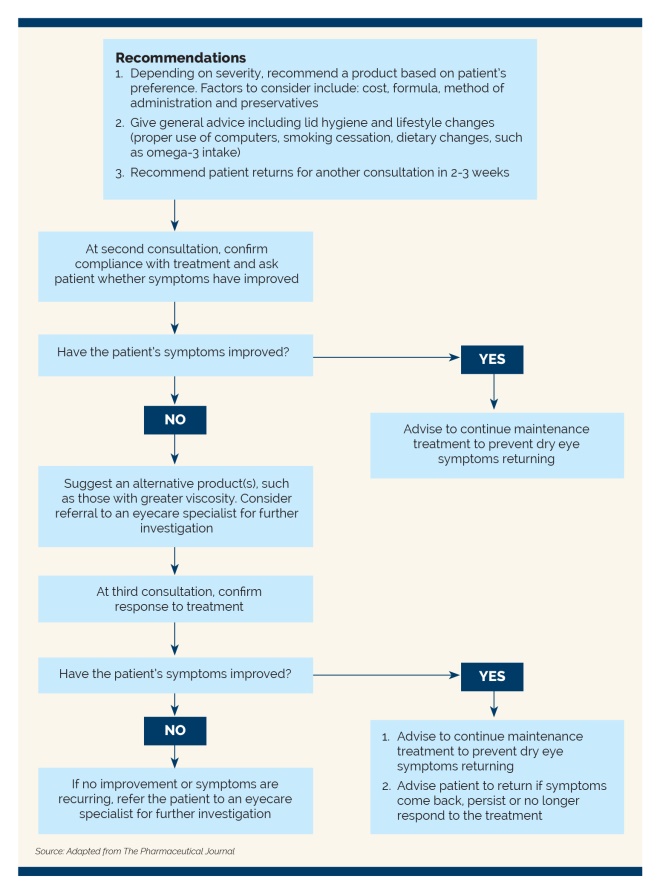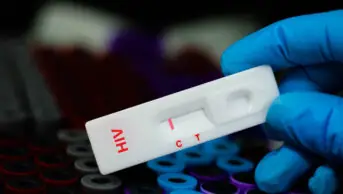
Shutterstock.com
It may take a few attempts with different products for patients to achieve relief from their symptoms. This may be because the treatment is ineffective or, alternatively, because of a phenomenon known as ‘tight shoes’ (i.e. where the patient feels only the worst symptom and, once this is treated, the symptom for the next worse condition surfaces in the patient’s awareness)[1]
.
- Advise patients that they may be able to only detect the most painful or irritating symptom. This means that it not uncommon to see a new symptom surface after one symptom has been treated because, once one symptom has improved, the patient may be able to detect another for the first time. This can be frustrating for patients, because it may feel like their symptoms will never be relieved fully;
- If patients are anxious or frustrated, reassure them that there are other treatment options available. For example, there are some types of specialised eyewear, called moisture chamber spectacles, which wrap around the eyes to protect them from irritants and help them to retain moisture. Always refer patients with persistent symptoms to an eyecare specialist.
If symptoms persist or worsen, patients should be referred to an eyecare specialist. This could be a sign of a more serious underlying condition, or suggest that their dry eye disease is severe and they require more targeted or potent treatment.
The following diagram, showing the dry eye patient’s journey in community pharmacy, can help to decide what is the best course of action at each stage. It is important to follow up with patients and encourage them to return after at least two weeks to find out whether their treatment was effective or whether their symptoms are persistent or have worsened.

Dry eye patient’s journey in community pharmacy
Source: MAG / The Pharmaceutical Journal
Resources for patients with dry eye disease
There are many charities and healthcare resources for patients looking for advice and support with their dry eye conditions and related conditions. These resources include:
- Tear Film and Ocular Surface Society (TFOS): A global collaboration of scientists, clinicians and industry professionals that aims to help the world to see better. www.tearfilm.org TFOS published an update to its 2007 Dry Eye Workshop (DEWS) report in July 2017. Find out more about DEWS II.
- Association of Optometrists: A membership organisation for optometrists and other optical professionals. www.aop.org.uk
- Glaucoma Association: A charity for people with glaucoma. Dry Eye Syndrome: A Guide:
www.glaucoma-association.com - Moorfields Eye Hospital NHS Foundation Trust: A specialist NHS eye hospital based in London. www.moorfields.nhs.uk
- National Eye Research Centre: A UK charity that funds research into the causes of eye disease, the development of treatments and the prevention of blindness. www.nerc-charity.org.uk
- NHS Choices: The UK’s largest health website, from the NHS.
- Blepharitis: www.nhs.uk/Conditions/Blepharitis/Pages/Treatment
- Dry eye syndrome: www.nhs.uk/Conditions/Dry-eye-syndrome/Pages/Treatment
- Rosacea: www.nhs.uk/conditions/Rosacea/Pages/Introduction.aspx
- Not A Dry Eye: A patient-driven, not-for-profit organisation to raise awareness of dry eye disease. www.notadryeye.org
- Royal National Institute of Blind People: A charity for people affected by sight loss. www.rnib.org.uk/ 0303 123 9999 / helpline@rnib.org.uk
References
[1] Not A Dry Eye. Symptoms. Available at: www.notadryeye.org/all-about-dry-eye-syndrome/symptoms-of-dry-eye-syndrome-and-related-conditions (accessed December 2017)


